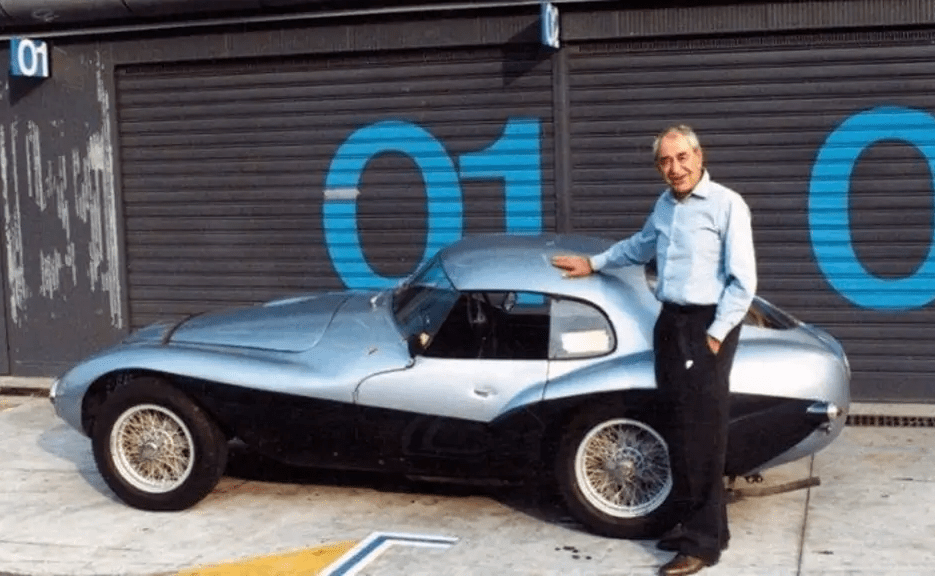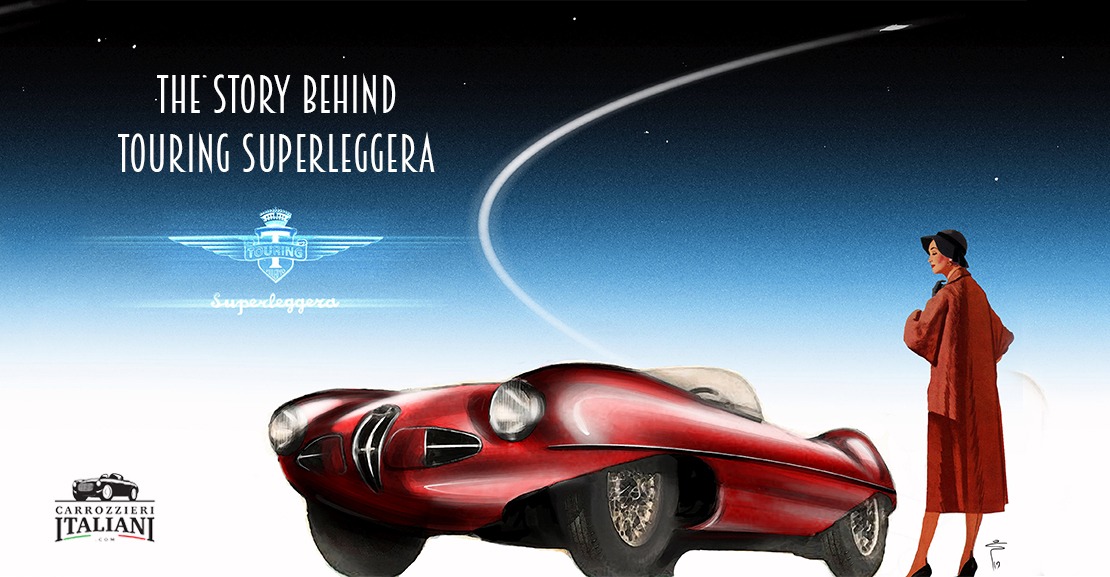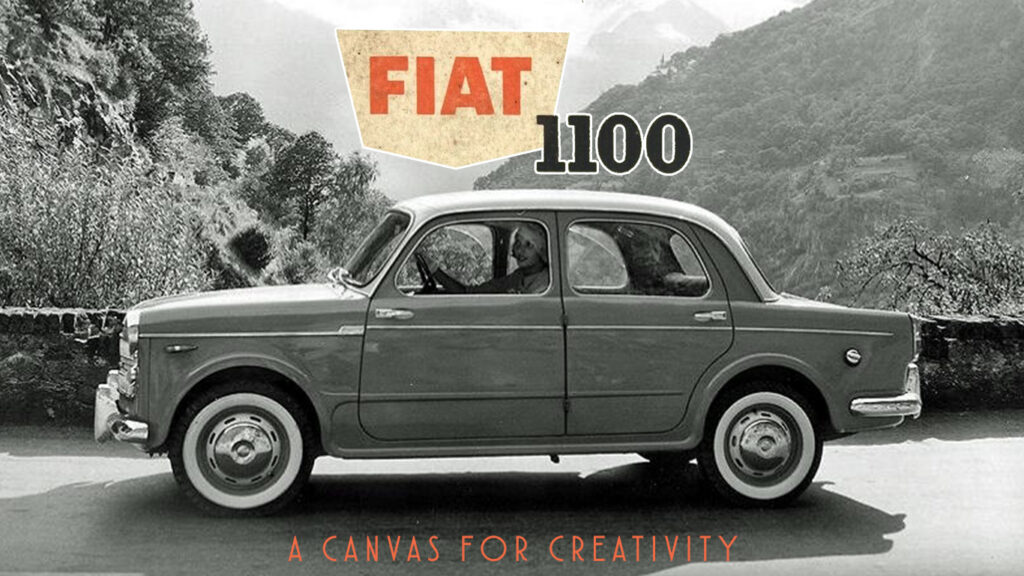
The Fiat 1100 stands as an enduring symbol of Italian automotive excellence, embodying a legacy of innovation and versatility that has captivated generations of enthusiasts. From its inception, this iconic model has transcended mere transportation, emerging as a cornerstone of Italy’s motoring heritage. With its timeless design, remarkable adaptability, and widespread popularity, the Fiat 1100 has left an indelible mark on the automotive landscape, cementing its status as a true classic. Join us as we delve into the rich history and enduring appeal of the Fiat 1100, a vehicle that continues to inspire admiration and fascination to this day.
The record for transformations and modifications certainly goes to the Fiat 600 when considering quantity; however, if the criterion were variety, the title would belong to the 1100. Embedded in its essence as the most widely spread national average car during the golden age of custom bodywork, is the peculiarity of having been used as a base for an incredible multitude of variations, ranging from sporting to professional and specialized uses.
The Era of the "Elaborate"
First and foremost, the Fiat 1100/103 found itself entangled in the world of elaborate customizations: vehicles with fundamentally stock bodies but enhanced finishes and features. This phenomenon flourished between the mid-1950s and the late 1960s, primarily driven by two motivations.
The first motivation stemmed from the increasing ubiquity of automobiles. As cars became more commonplace and standardized, there arose a risk of them appearing impersonal, losing their ability to signify status for their owners. Customization emerged as a solution, with coachbuilders offering personalized touches easily adaptable to individual tastes, typically at prices not exceeding 20% of the standard car’s cost. While the phenomenon primarily affected the Fiat 600 and, to a lesser extent, the Fiat 500, it also extended to the Fiat 1100 and occasionally to more prestigious models like the Appia and Giulietta.
The second motivation revolved around the practicality of readily available vehicles. Many of these coachbuilders secured robust contracts with Fiat, ensuring a supply of vehicles for immediate delivery. This was a significant advantage, considering the average waiting time for a new car often exceeded six months. The trend cut across various sectors, involving not only traditional coachbuilders but also independent repair shops, which had access to a plethora of loose components and pre-packaged kits on the market.
The Pioneers of Customization
Among those who specialized in this sector, Antonio Scioneri stands out. He established a nationwide commercial network, comprising small provincial dealerships, in competition with Fiat’s main dealership network. Other notable players included Canta and Fissore, alongside renowned names like Viotti, Vignale, and even Touring. The renowned Ghia even established a subsidiary, Ghia Serie Speciali, dedicated to producing such customized products, making its debut in 1954 with a Fiat 1100/103. Moretti and Cisitalia also ventured into customization to navigate challenging market conditions, where small manufacturers struggled for space amidst the generosity shown towards coachbuilders.
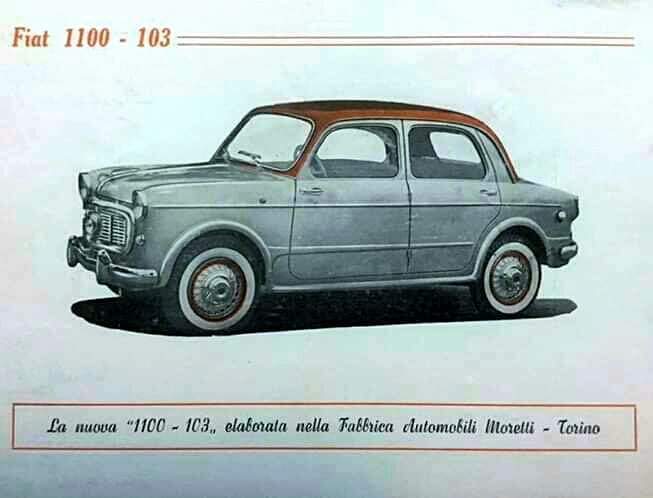
It’s worth noting that major coachbuilders often used only their own brand for these elaborate customizations, subcontracting specialized work to third-party artisans. In Turin, several such artisans, like Amandonico and Carel, were sought after for their expertise in bringing coachbuilders’ visions to life.
Berlinetta or Coupé?
The Fiat 1100/103 was a versatile platform that found its way into a variety of custom body designs, ranging from sporty coupés to elegant berlinettes. This versatility made it an appealing choice for those seeking a departure from the standard sedan, particularly during a period when Fiat lacked a compact sports car in its lineup.
The absence of a direct competitor and the relatively high positioning of other sports cars made the Fiat 1100 an attractive canvas for customization. Even with the introduction of the Alfa Romeo Giulietta Sprint in 1954, the Fiat derivative remained competitive due to the favorable economics of custom bodywork and tax considerations of the time.
Italian coachbuilders seized the opportunity, offering a diverse array of options to suit various tastes and needs. Pininfarina, for instance, produced four series of custom-bodied 1100 models between 1953 and 1960, catering directly to public demand rather than working on commission from automakers.
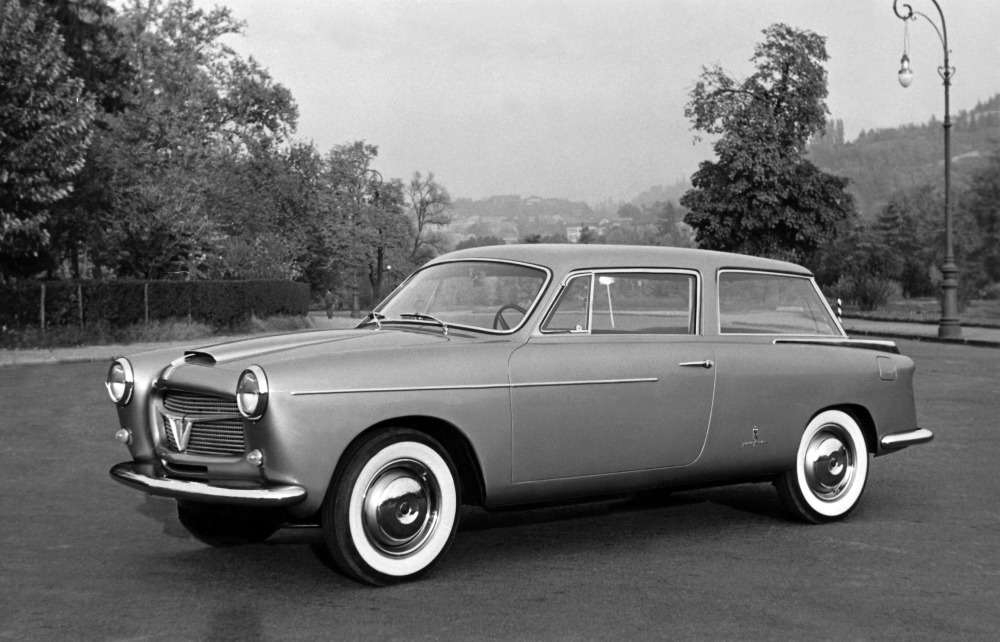
Additionally, unique creations emerged, such as an American-inspired station wagon, showcasing the breadth of possibilities offered by the Fiat 1100 platform. Viotti’s 1100 Gran Turismo, introduced in 1956 and available in a “Giardinetta” estate version, further expanded the range of custom options available to Fiat enthusiasts.
Even more indicative of the vitality of coachbuilders is Vignale’s production: in less than five years, they crafted five distinct models based on the 1100/103 and 1200, made in limited series, alongside numerous unique commissions, all resulting from collaborations with Giovanni Michelotti and each possessing its own unique character.
Their journey commenced in 1954 with the “Charmant,” a modest four-seater berlinetta still reflecting post-war design influences. Following this, in 1955, they unveiled the “Mignon,” a sleek and lightweight two-seater, sharing styling cues, albeit with altered proportions, with some contemporary custom Ferraris. By 1956, they introduced the “Desirée,” presenting a more modern and aggressive spacious berlinetta, alongside the “Printemps” catering to a more sports-oriented clientele. Their evolutionary trajectory reached its zenith in 1957 with the “Wonderful,” featuring an even more extravagant and eye-catching design, highlighted by its sophisticated two-tone paint scheme accentuating its distinctive rear fins. Additionally, there were approximately as many models of family cars, a discussion of which will follow later.
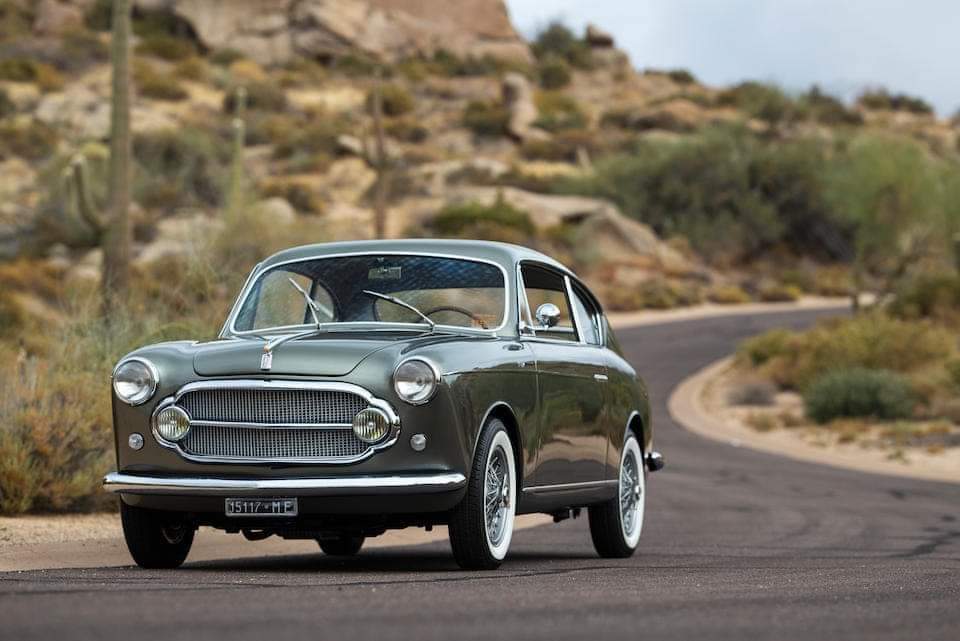
For sporty custom bodies, the Fiat 1100 also provided a platform for a short-lived attempt to revive the Cisitalia brand by Carlo Dusio, son of the founder. After returning to Italy following the Argentine venture, he established a new facility in Racconigi with the aim of recreating the success of his father’s company. This involved creating sports cars using mass-produced mechanics, paired with elegant bodywork and refined mechanical enhancements. However, this venture operated on a smaller scale with limited investments and modest ambitions. Despite only six years passing since the introduction of the legendary “202” (and just four since the venture in South America), Italy was rapidly changing.
The post-war era of prosperity was transitioning into an economic boom, theoretically expanding the market space. Nevertheless, competition was fierce, and the new Cisitalia models struggled to distinguish themselves beyond evoking memories of the brand’s racing heritage. The venture began with the introduction of the unique “33 DF Volo Radente” (Derivata Fiat -> Derived from Fiat) at the 1953 Turin Motor Show, a distinctive spider design crafted by the young talent Aldo Brovarone. Subsequent efforts included a limited series of coupés, never quite matching the success of the brand’s 1940s heyday. Similarly, subsequent endeavors with the 1957 “35 DF” and “36 DF” models, equipped with a 1,250 engine sourced from Siata for the former and standard mechanics for the latter, failed to gain significant traction. Ultimately, Cisitalia closed its doors for good in 1964, concluding a slow decline marked by custom bodies derived from the Fiat 600, essentially rebranded Siata cars.
Also Suitable for Racing
Turning our attention back to the Fiat 1100/103, we mustn’t forget its prowess in racing. The class for up to 1100 cc remained prominent, especially in the first half of the 1950s, albeit with a slightly subdued enthusiasm from smaller manufacturers compared to earlier years. While there weren’t artisanal “sports” models based on the 1100/103 – unlike the numerous variants derived from the first generation of the 1100 – the race tracks weren’t exclusively populated by the 1100 TV sedans in the Touring category.
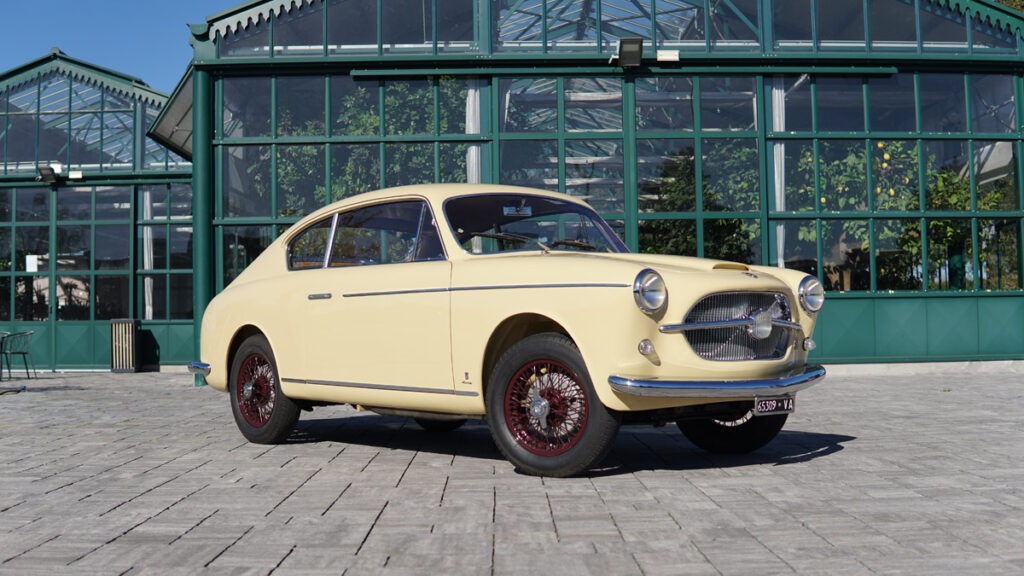
The standout performer among custom-built Gran Turismo models was the “1103” (a fanciful abbreviation of the original name, used to differentiate it from the previous model with a separate chassis) crafted by Zagato. This model even made its mark in Turin, thanks to an unusual collaboration with Siata. The Ambrosini company initially ventured into competitions with a Vignale-bodied coupé (based on the “Charmant”) before turning to Zagato, likely attracted by the lightweight aluminum construction. The outcome was the Siata 1250 GT, featuring a body essentially identical to that of the 1103 and, with engine tweaks, aimed to compete in the higher-displacement class.
On a smaller scale but with more pronounced aesthetic achievements was the collaboration between Bertone and Stanguellini. In 1954, they crafted about ten units of a 1100 Berlinetta characterized by original “fish face”front, echoing the design trends of the time.
Here come the Concept Cars
Amidst a landscape blending the unique, the aspirational dream-car (a concept more familiar in American marketing, yet to fully take root in Italy), and the realm of authentic racing, numerous one-of-a-kind specimens emerged.
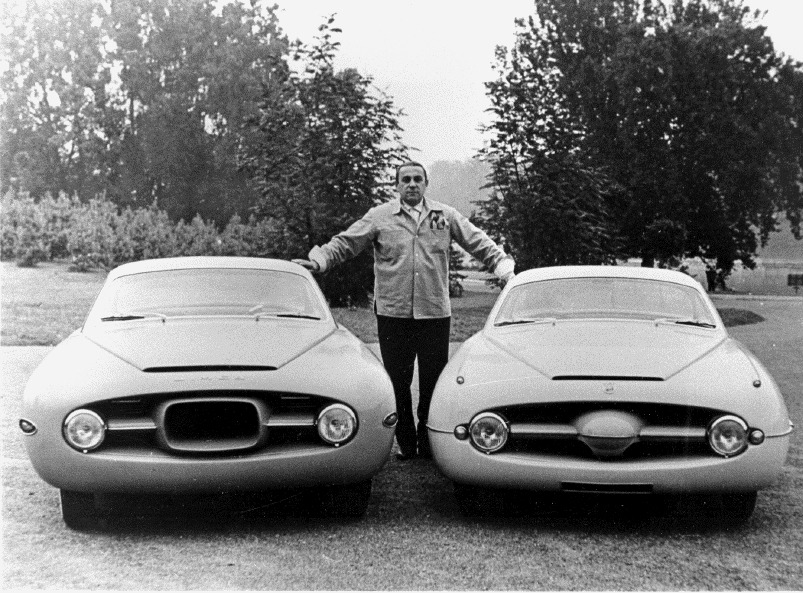
One of the most remarkable examples is undoubtedly the Abarth 1100 Sport – a vehicle heavily inspired by aviation, featuring a prominent nose cone at its frontal center, crafted by Ghia in 1953 based on the 1100 TV platform. Another similar specimen emerged, this time based on the Simca 9 1200 (distinguished by its rectangular nose cone). However, these were mere precursors to yet another masterpiece. Following disagreements with his partner, Felice Mario Boano shifted his focus to his own ventures. Alongside his role as a stylist, he owned a bodywork and metalworking workshop, boasting excellent skills in aluminum craftsmanship. The subsequent year saw him reunite with Carlo Abarth, resulting in a trio of aerodynamic cars: the racing spider 207 A (featuring an enlarged 1,270 cc engine), the two-seater spider 208 A, and the coupé 209 A. Despite utilizing only the mechanical components of the 1100/103, expertly modified by the Italo-Austrian preparer, their aluminum bodies, crafted at the Boano Lavorazioni Speciali workshop, were mounted on sheet metal frames designed by Abarth himself. While their sporting achievements were modest, their aesthetic prowess was exceptional, epitomizing the “aeronautical” design ethos of the era. Similarly, the 1200 Spyder America, another singular creation born from the collaboration between Bertone and Stanguellini, was overseen by Franco Scaglione. Renowned for his mastery in aerodynamic design, exemplified by his celebrated Alfa Romeo B.A.T. series, Scaglione delivered yet another remarkable feat.
From Giardinetta's to Special Vehicles
The Fiat 1100, an emblem of post-war Italy’s automotive industry, didn’t just dominate the roads as a standard sedan. Its versatility extended to various specialized iterations, showcasing the ingenuity of both Fiat and independent coachbuilders.
During the reconstruction era, the Fiat 1100’s first generation took center stage, largely due to the innovative concept of “giardinette” – vehicles featuring a unique steel and wood construction. Spearheaded by Mario Revelli di Beaumont and built by Viotti and Fissore, these creations captured the essence of the American automotive style. With the introduction of the 1100/103, wooden structures became obsolete, but their aesthetic influence endured, reminiscent of the Fiat 500 C Belvedere‘s charm.
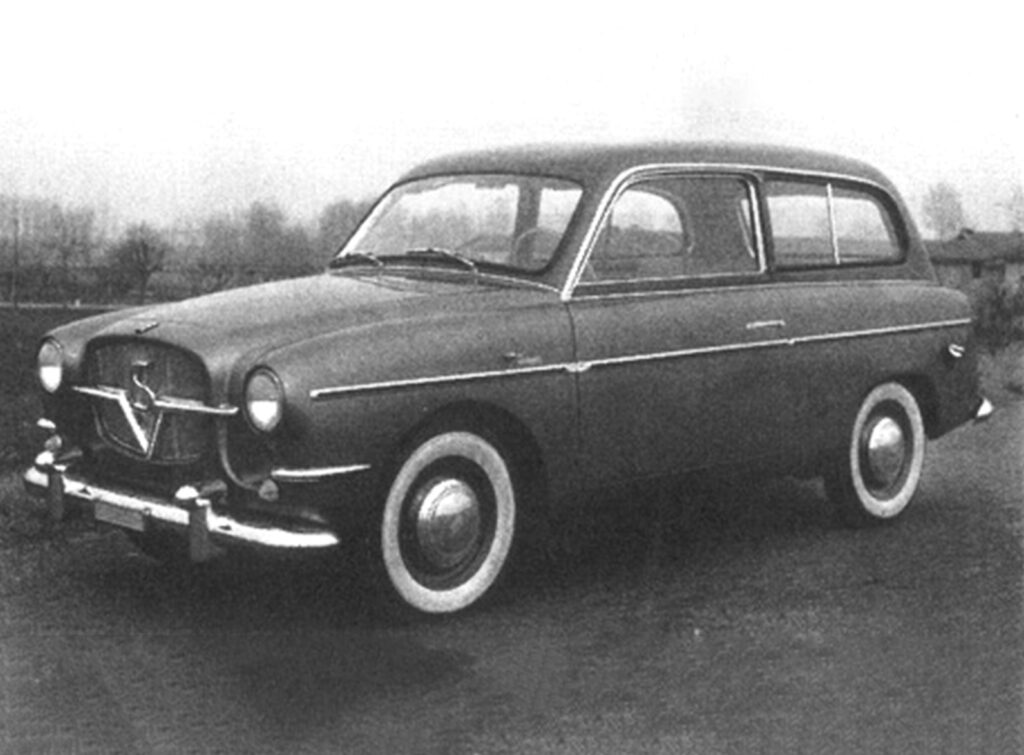
In 1954, Fiat introduced the 1100/103 Familiare, a rational mass-produced vehicle, signaling a shift in the market. Coachbuilders, unable to compete directly, ventured into specialized designs or elegant customizations. Viotti, the pioneer of the “Giardinetta,” continued its legacy with a refined three-door model, showcasing two distinct series, the latter epitomizing modern styling.
While Viotti led the charge, other coachbuilders experimented with unique and attractive designs. Pininfarina crafted the 1100 TV Sports Wagon in 1954, while Scioneri unveiled the 1100 TV Giardinetta, and Ghia introduced the 1200 Station Wagon with a sliding rear roof for convenience.
Vignale, known for its exuberance, produced models emphasizing capacity, including taxi-centric designs with either a hatchback or a separate trunk. In 1957, they ventured into sportier territory with the “Garden Car,” a three-door variant derived from the “Wonderful” coupé.
For specialized applications, such as ambulance services, the Fiat 1100 became indispensable. Organizations like the Pubbliche Assistenze and the Misericordie relied on variants tailored for their needs. Coachbuilders like Garavini, Savio, Coriasco, Fissore, and Mariani specialized in crafting ambulances, ensuring that even smaller organizations could afford reliable emergency vehicles.
In addition to specialized vehicles, some coachbuilders ventured into utility vehicles, while others produced advertising vehicles. However, as the automotive landscape evolved, companies shifted towards more practical choices for daily transportation, leaving the 1100’s legacy intact but evolving with the times.
Conclusion
The Fiat 1100’s journey from standard sedan to specialized vehicles highlights its adaptability and enduring legacy in Italy’s automotive history. As an emblem of post-war recovery and innovation, it continues to inspire admiration among enthusiasts and historians alike.
Source: Fiat 1100/103 – 70 anni di un fenomeno italiano – Fuoriserie per tutti gli usi e per tutti i gusti (Alessandro Sannia – aisastoryauto.it)

